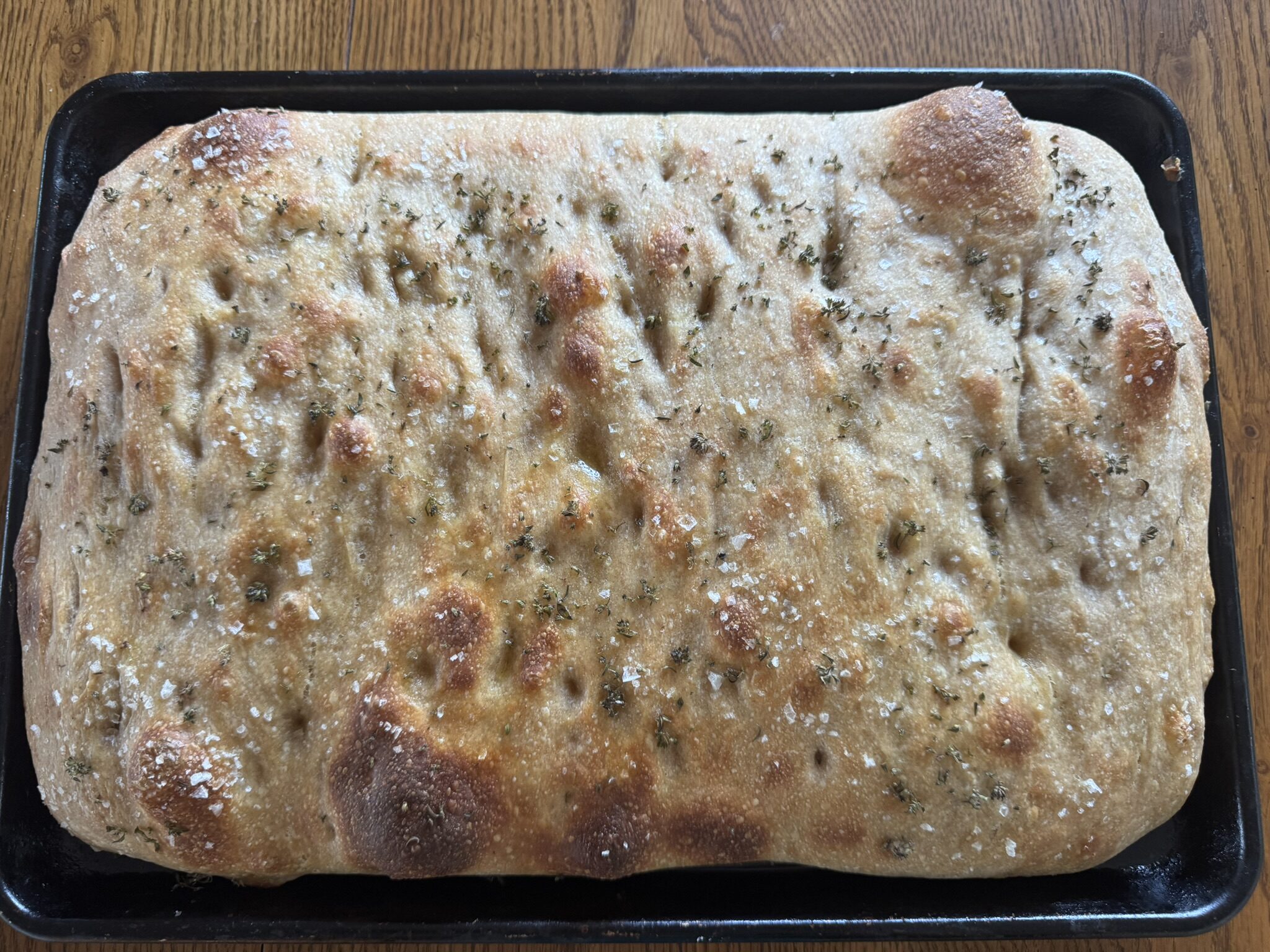
This is the focaccia recipe from New World Sourdough by Bryan Ford. It contains 20% whole wheat, 80% bread flour, and 70% hydration.
Focaccia dough contains oil, which I am not accustomed to using. I chose to combine only the water, flour, and levain for the autolyse. This way the flour would have a chance to absorb water before the addition of oil, which coats the wheat and inhibits absorption of water which in turn is necessary for gluten development. Mixing the oil afterthe autolyse took some elbow grease and resulted in a tackier and somewhat less homogeneous dough than I am used to.
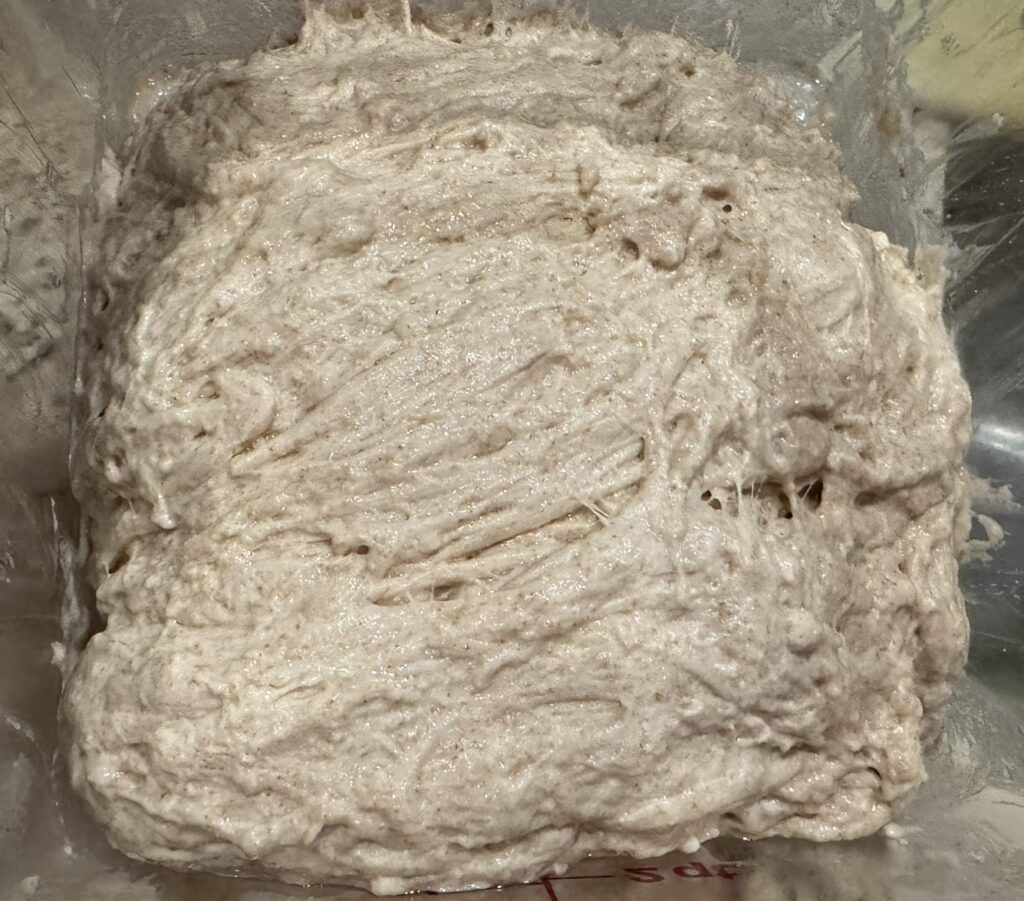
This formula involved no folding, so I left it to its own devices to organize itself overnight.
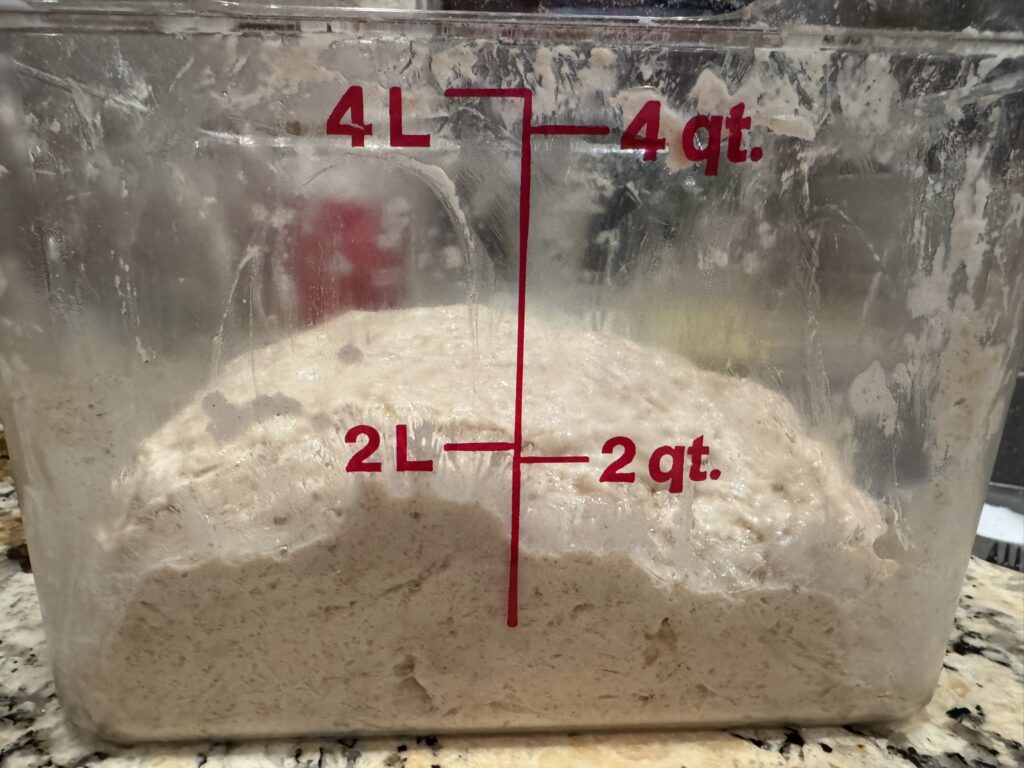
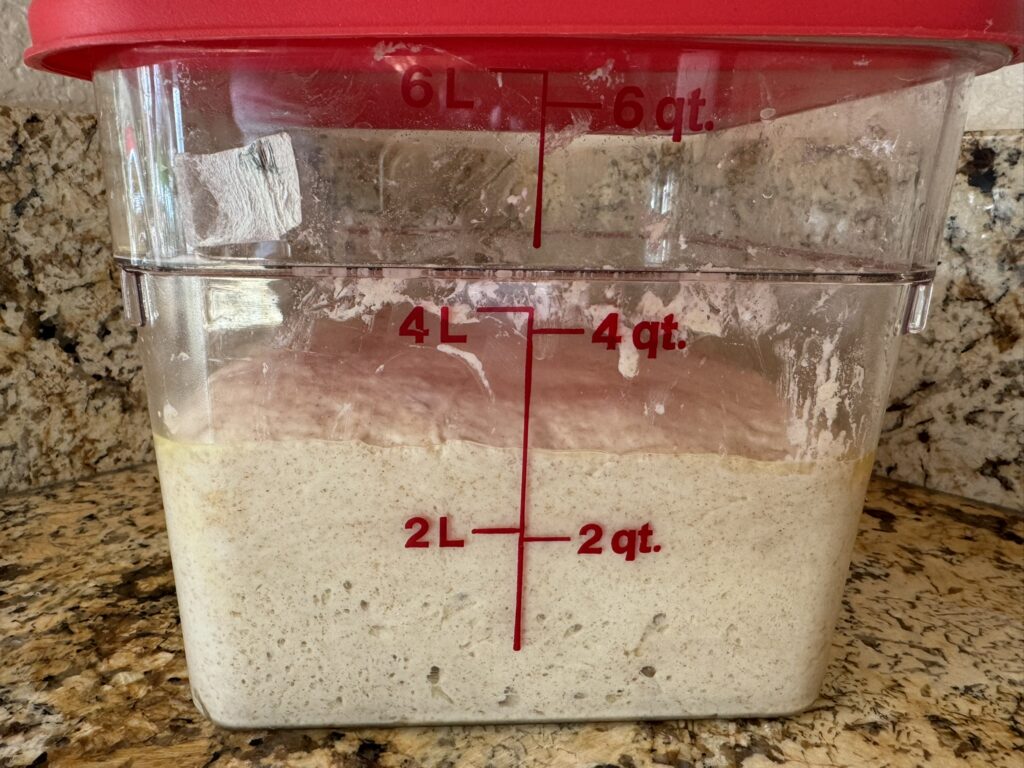
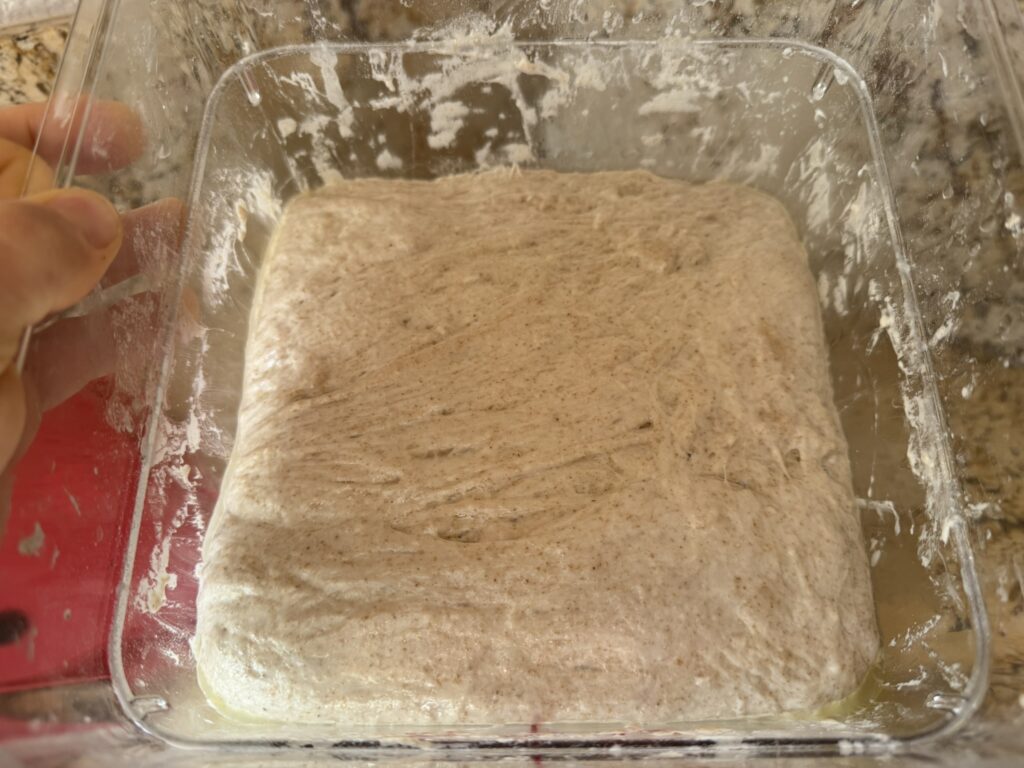
The dough was extremely sticky and oozy, not surprising since it was minimally mixed. Since focaccia does not need to hold much of a shape, there is no pre-shaping/bench rest phase. The only shaping is done with a tension roll, and then the roll was placed on a baking sheet to proof. The dough felt uncooperative at almost every step of the roll, but I did my best and managed to get it into a reasonable enough looking shape to proof.

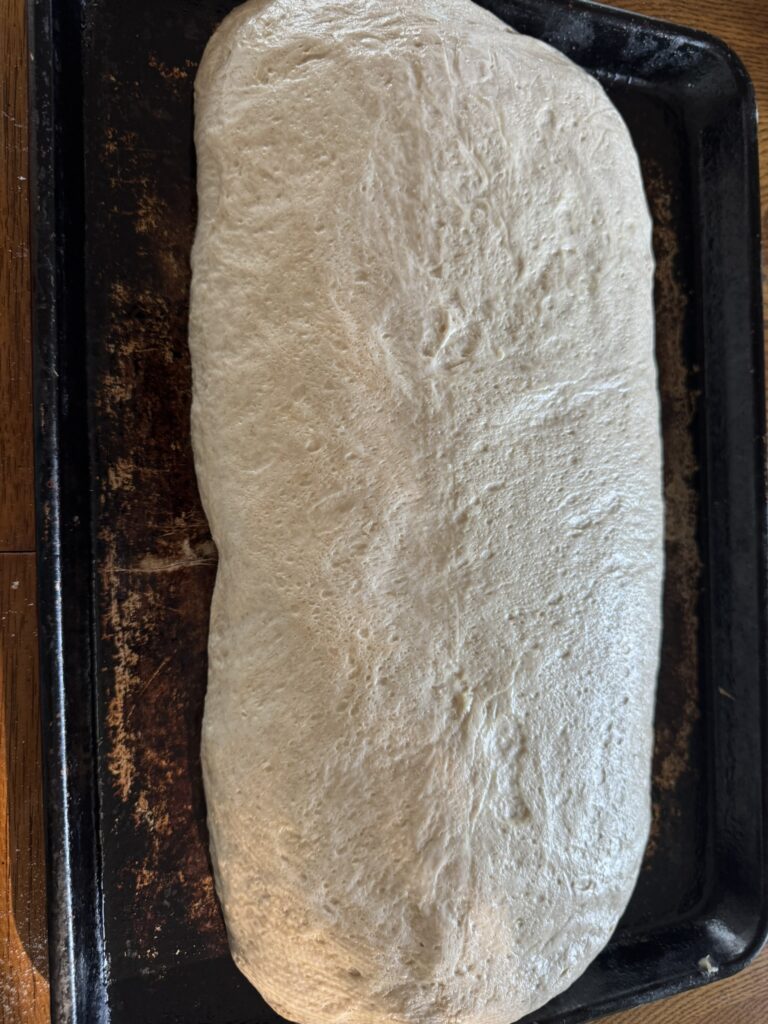
After 3-4 hours, the dough looked “spongy and jiggly”. With oily fingers I “shaped” the final loaf by pressing down into the dough, like playing a piano as the book instructed. Using a downward motion was sufficient to spread the dough without having to pull or stretch it. I was not sure how much to press – should I press all the way down into the pan or only part way? Should I pop the large gas bubbles? I erred somewhere in the middle of both questions. Some oil and large flake salt and fresh herbs topped off the bake, and into the oven it went.
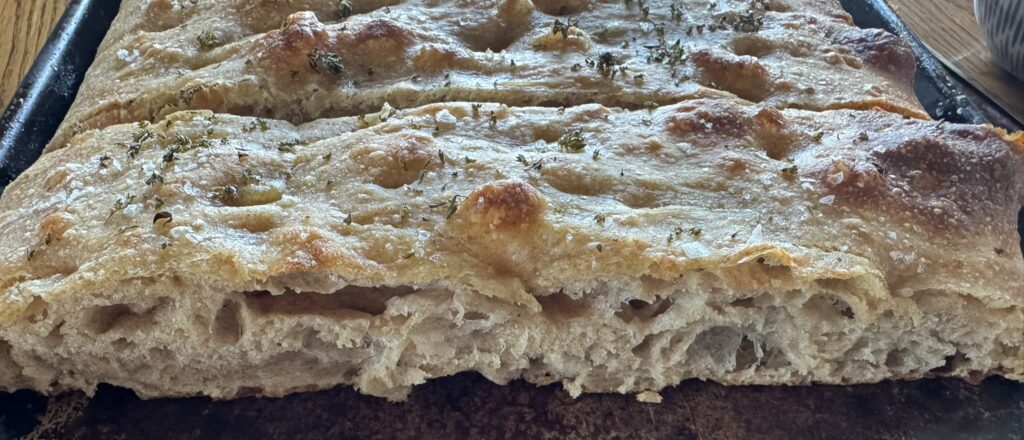
In the end the resulting crumb was moist and airy and irregular, a fine bake!
Questions, notes, and what would I do differently next time?
- To withold or not withold the oil for the autolyse?
- Turns out my instinct was correct to withhold it (based on light internet research)
- How deeply to press the final dough?
- In hindsight, I think I could have pressed it more. The traditional dimples telling of a focaccia were not as visible as they could have been.
- How thin to press the final dough?
- I think I could have pressed it thinner. Essentially I think I could have ignored the gas bubbles, neither intentionally leaving them or popping them. Instead I could focus on pressing to the edges of the pan without worrying about deflating the dough too much. I think the bake could have been slightly shorter/thinner without losing its body.
Leave a Reply